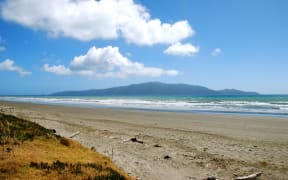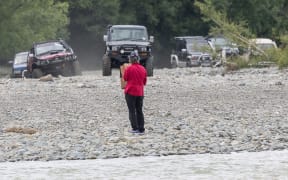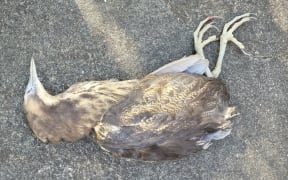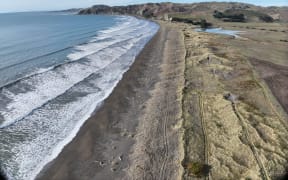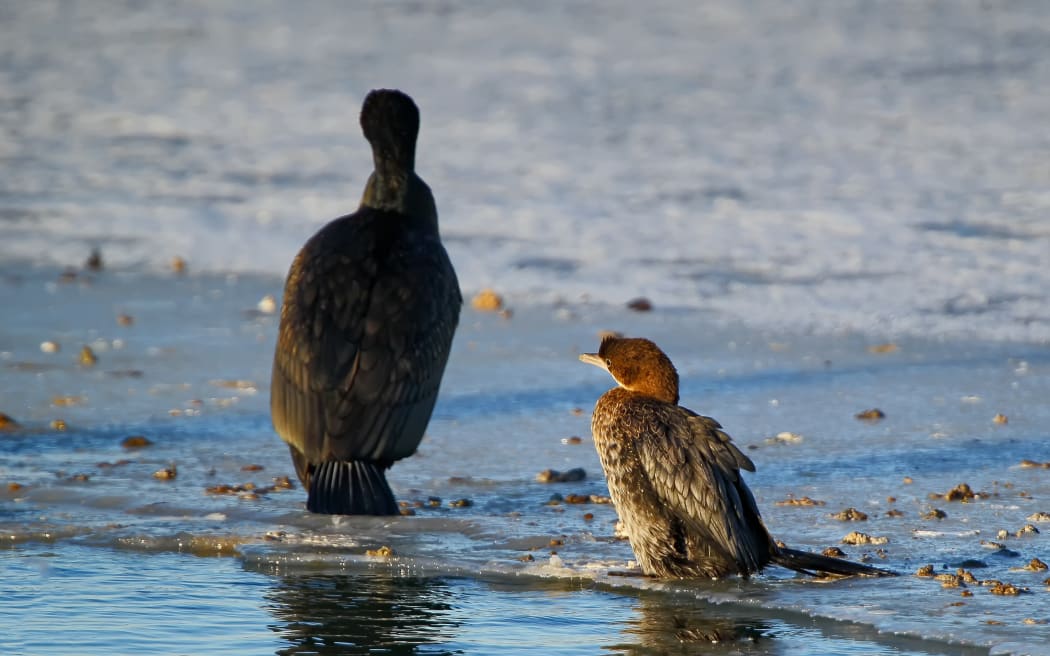
The little cormorant sits on the ice of the bay next to the great cormorant at Waikanae Estuary. Photo: 123RF / Voodison
A Department of Conservation ranger is heartbroken people are flouting the rules by driving their cars at the Waikanae estuary scientific reserve.
The protected area of the Kāpiti Coast is a roosting and nesting site for more than 60 bird species, including banded dotterel and white-fronted terns.
It is also home to native insects and fish species such as whitebait.
Vehicles are banned at the reserve under the Kāpiti Coast District Council (KCDC) beach bylaw but at least two cars have been reported to Department of Conservation (DOC) and police within a week.
Community ranger Steve Bielby said it was an ongoing problem, despite clear signage and patrolling in the area.
"The community's heartbroken by seeing those vehicles in that estuary. That's why we get regular reports and we encourage that reporting. So, people that are thinking of getting in their vehicle and going for a drive on a beach, they need to know how their own community feels about that."
Birds were currently nesting on the beach with young chicks who were particularly vulnerable to people driving in cars, Bielby said.
"If I had a magic wand, I would enable all those people in the community who hop into their vehicles and don't think, to get a connection with nature and an understanding of the damage they're doing. That would be the one thing I'd ask for."

Waikanae Estuary, Kapiti Coast, New Zealand. Photo: 123RF / 500px/ Picasa
Bielby said any sightings of cars at the Waikanae estuary should be reported to 0800 DOC HOT and reports could result in a warning or a fine for the driver.
The Waikanae Estuary Care Group also has a camera set up at the reserve to help spot and report drivers.
Group administrator Robin Gunston said people drove on to the beach using the boat ramps at Waikanae Boat Club and Paraparaumu beach.
There were clear signs at the ramps warning people not to drive over the protected estuary, but people ignored them, Gunston said.
"Every time a vehicle comes along there, they [the birds] scatter and they might run over them. We've had eggs run over in the past, dotterel eggs and we only have a couple of New Zealand dotterel nests on the spit... That's a lot of people's effort gone into erecting signs and fencing and protecting the birds which is just destroyed by someone's folly."
The district council is also frustrated people are driving on prohibited areas of the coastline's beaches.
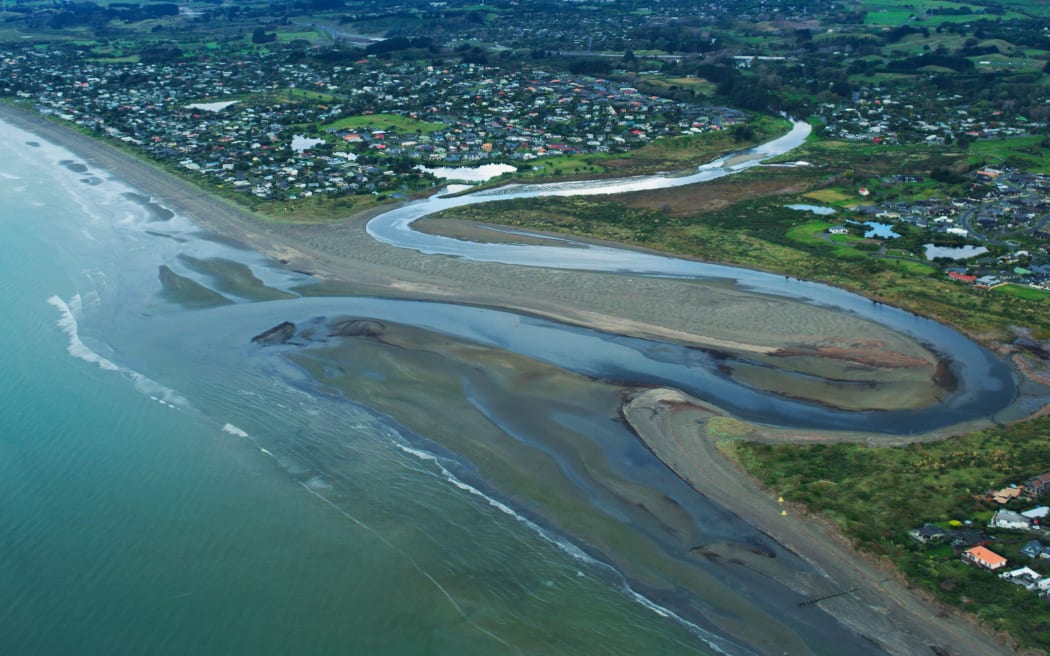
Photo: 123rf
KCDC environmental standards manager Richard Hopkins said cars were largely prohibited on Kāpiti Coast beaches under the beach bylaw.
"The rules are set up in a way that we look to manage the ecological effect as well as avoid conflict of use. So, where people are enjoying the likes of picnics and things, we don't want people driving through there at speed."
Hopkins said beach driving at a speed limit of 20km/h was only allowed where populations were smaller, north of Waikanae and south of Te Horo, and at boat launching areas.
But the number of public complaints of illegal beach driving had been declining due to regular patrols by council officers, he said.
Over summer eight officers patrol the beaches along the Kāpiti Coast and inform drivers about where they can and cannot be.
"In 2020, I can see that there was more than 100 complaints come through to council about unwanted driving behaviour on the beach and in the last year it was more like 30."
Hopkins believes people are more aware now of the value of the beach as a taonga or treasure.
